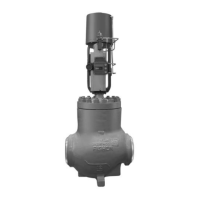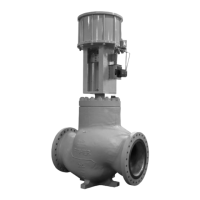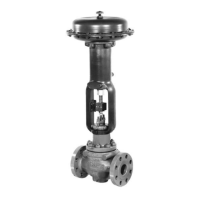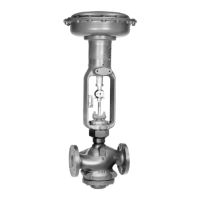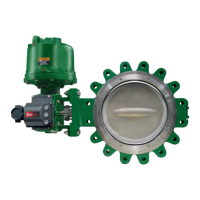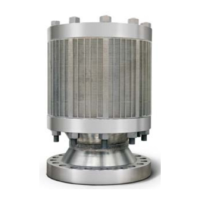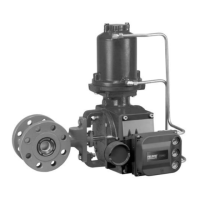!
W4573
WARNING
7. Separate the remainder of the diaphragm unit
parts. Take the lock nut (key 31) off of the pusher
post (key 10). Slide off the lock washer (key 28),
lower spring seat (key 8), diaphragm (key 12),
washer (key 58) and gasket (key 29).
8. Slip the valve plug (key 4) onto the pusher post
(key 10). Place a gasket (key 29) on the shaft of
the pusher post over the threaded portion until
it rests on the base of the post. The printed side
should be facing upwards when installed. Place a
metal washer (key 58) on top of the gasket.
9. Slip the lower spring seat (key 8) and lock washer
(key 28) back onto the pusher post (key 10).
Lubricate the threads of the pusher post and
tighten the pusher post lock nut (key 31) until
the lock washer is flat and then turn the nut an
additional 1/8 to 1/4 turn. Return the diaphragm
(key 12), spring seat and pusher post assembly to
the body (key 1).
10. Set the relief valve spring (key 11) in the lower
spring seat and place the upper spring seat (key 9)
on the spring.
11. Put the spring case (key 2) over the spring
(key 11) and onto the body (key 1). Tighten the
cap screws (key 16) finger tight only.
12. To ensure proper slack in the diaphragm (key 12),
apply some spring compression by turning
the adjusting screw (key 15) clockwise. Finish
tightening the cap screws (key 16) with 10 to
13 ft-lbs / 13.56 to 17.63 N•m of torque.
Type 112 Restrictor Maintenance
Avoid personal injury or damage
to property from sudden release of
pressure or uncontrolled process
fluid. Before starting to disassemble,
carefully release all pressures
according to the shutdown procedure.
Use gauges to monitor inlet, loading
and outlet pressures while releasing
these pressures.
Note
Accumulated dirt, mineral deposit,
clogged debris or sediment buildup
inside the restrictor may cause the
unit response to get slower and unit
performance to decrease. If any of these
is suspected, immediately inspect and
clean the restrictor.
Perform the following procedure if O-rings are
leaking or if there is a need to inspect and remove
accumulated dirt, mineral deposit, clogged debris or
sediment buildup inside the restrictor. Key numbers
are referenced in Figure 17.
1. Unscrew the groove valve (key 22) and retainer
(key 23) just enough to loosen them, but do not
completely separate.
2. As shown in Figure 9, push on the retainer
(key 23) to push the groove valve (key 22) out of
the body (key 21), then complete disassembly.
3. Inspect the gaps and small spaces inside
the restrictor. Check and remove any debris,
accumulated dirt, mineral deposit or sediment
buildup that clogs the restrictor.
4. Replace the groove valve O-rings (key 24) if
necessary, being sure to lightly apply lubricant to
the replacement O-rings before installing them in
the groove valve and retainer.
5. Install the groove valve (key 22) into the same
side of the body where the scale appears. Install
the retainer into the opposite side of the body and
tighten until both are secure.
6. When all maintenance is complete, refer to the
Startup and Adjustment section to put the regulator
back into operation.
Parts Ordering
When corresponding with your local Sales Office about
this equipment, reference the equipment serial number
or FS number found on a nameplate attached to the
bonnet. When ordering replacement parts, reference
the key number of each needed part as found in
the following parts list. Separate kit containing all
recommended spare parts is available.
Figure 9. Pushing Groove Valve Up With Retainer
15
Type LR128

